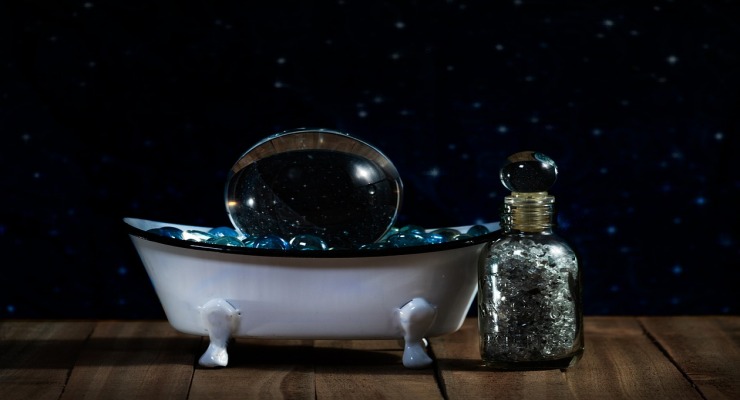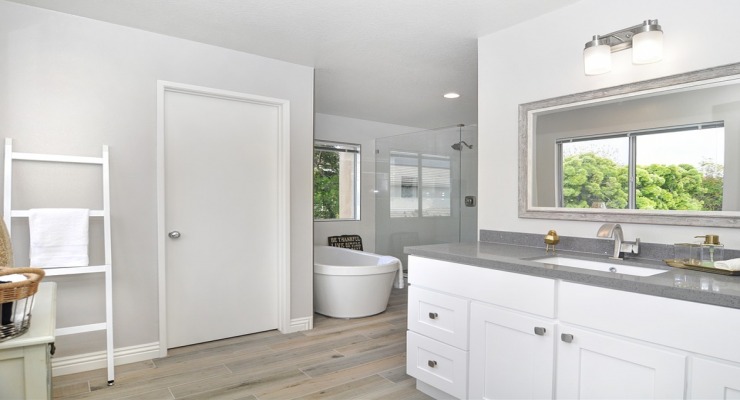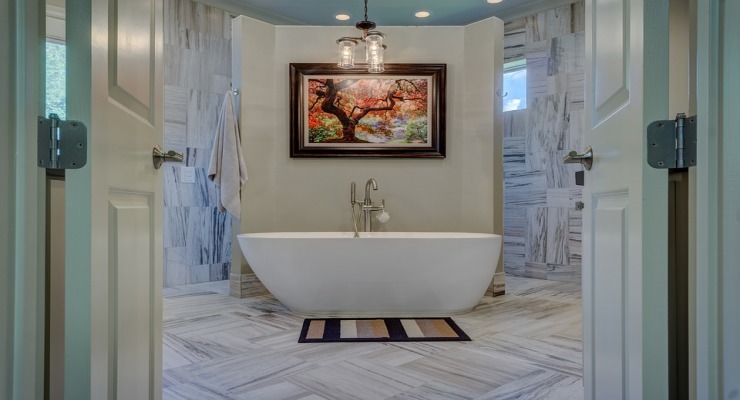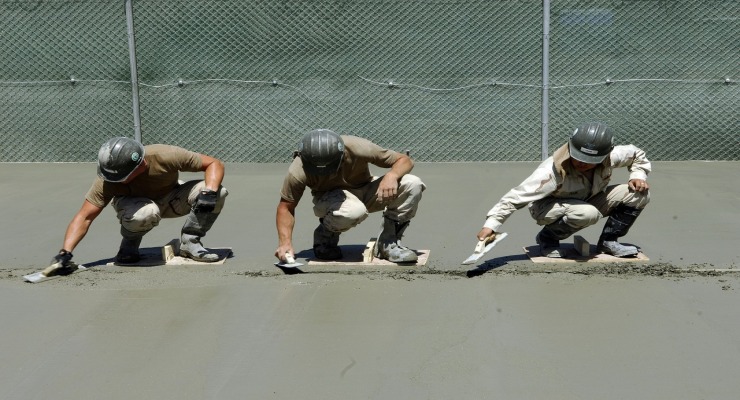How to waterproof bathroom flooring and walls?
The bathroom is particularly prone to moisture and damage from water. Because of this, make sure to protect the room against those dangers. Walls and floor waterproofing is the main aspect in this regard. Thanks to it, one can create a protective layer on the walls and flooring. When you decide to waterproof the bathroom, the harmful effects of humidity are significantly decreased. When does one need to take care of it? What are the most important issues?

What is bathroom waterproofing?
Bathroom waterproofing is quite easy - it protects surfaces against moisture and prevents water from getting e.g. under the tiles on the floor or walls.
The main purpose of the bathroom waterproofing is sealing the surface, which eliminates many potential threats such as fungi and mold growth under the tiles, or breaking their grip to the substrate.
Why is it important to waterproof the bathroom?
Water accumulating on flat surfaces might have a negative impact on the aesthetics of the interior. It might cause damage to the surface and influence the residents’ health. The liquid sinking into the walls causes dampness, which might lead to growth of a dangerous mold. It not only looks terrible, but also might cause various allergies and respiratory diseases.
It is particularly dangerous for people suffering from respiratory illnesses or asthma. The risk is higher in small children, whose immune system is much weaker than in adults.
Apart from health issues, excessive humidity is harmful for the bulding’s construction, which might need a total renovation after some time. That’s why it is extremely important to waterproof the bathroom. It is often highlighted by construction and interior design specialists.
Bathroom waterproofing - not only against dampness, but also water
Regardless of how skillfully the tiles were laid, some cracks always appear after a while. Because of this, water might get under the tiling - in a steam or liquid form. Such situation is inevitable. Furthermore, this issue concerns not only a bathroom - although here the scale of the problem is the largest - but also a laundry and drying room. For this reason, it is necessary to waterproof the room.
There are two types of surface waterproofing one might perform in one room. The main issue is securing the surface before laying the tiles. The products used at this stage will protect the structure of the building against water intrusion. Waterproofing the tiles is another problem. Thanks to special substances, water will remain on the tile, and it can be easily removed by the means of ventilation system.

Waterproofing a bathroom - which sections of the rooms?
Typically, every bathroom has two zones: wet and dry. The first basically involves the whole room. These are the places which are likely to have contact with water, which can splash everywhere - when performing ordinary, everyday activities.
In this case, the floor and walls up to 10 cm are the largest area. They should be carefully waterproofed.
Is every waterproofing product the same?
Bathroom waterproofing can be done with three types of products - each has sealing properties, but it is meant for various types of surfaces. For this reason, their properties differ.
- Liquid waterproofing membrane - it is based on synthetic resin, thanks to which it provides a perfect protection. The product is very easy to use - one just has to mix it and cover a particular area with it, using e.g. a special roller or brush. The first layer can be laid freely, while the next one must be perpendicular to it. The biggest advantage of the membrane is its versatility. It can be used both for concrete surfaces, cement plaster and plasterboards. This type of protection is highly recommended for anybody who values their time - the membrane dries quickly, so one can immediately start laying the tiles in the bathroom.
- Sealing compounds - it’s a perfect alternative to a liquid membrane. It is made of cement mortar and synthetic resin. This type of material has much more dense structure than the previously mentioned membrane. It is typically used for securing mineral surfaces, but manufacturers also offer products for panel or stone cladding. The compound should be applied cross-wise, in two layers. It cannot be used for interiors with underfloor radiant heating.
- Cement-based waterproofing compounds - also a highly effective material, used not only for bathrooms, but on balconies, patios, and to protect foundations as well. The material is highly durable, frost-resistant and flexible.

How to waterproof a bathroom - a step-by-step guide
Preparing the surface is the most important issue one should do before applying a waterproofing layer. It must be cleaned from any wet and greasy stains, dust and remaining elements after the renovation. Any larger holes need to be filled with mortar. If the surface is ready, one might start the application of a waterproofing product. During the process, one should carefully follow the manufacturer’s instructions. All the necessary information has been written on the packaging. Make sure to apply two layers.
Remember. After finishing the application, protect the surface for 3 more days from contact with water.
Additional waterproofing measures
Because of the constant humidity ans water presence in the bathroom, ceramic sanitary wares might absorb the moisture as well. A proper bathroom waterproofing should prevent any harm. It is recommended, however, to consider any additional preventive measures - e.g. sealing the mentioned sanitary wares with a silicone sealant.
Thanks to the products available in many colours, one can easily match them with any bathroom design so that the sealing is aesthetic. Furthermore, sealing with silicone is very easy to make. All you need is a caulk gun which will make the process very simple.
Do you want to your bathroom to look beautiful and be functional for many years? Remember that waterproofing is the most important.
FAQ
Which bathroom waterproofing method is the best?
An ideal way to waterproof a bathroom, which would be good for everyone, doesn't exist. Each product is slightly different. Liquid waterproofing membrane is the most universal option. It is easy to spread and guarantees an effective protection. Sometimes, however, special waterproofing paste or mortar need to be used instead. The latter are also good for waterproofing a balcony or a patio.


